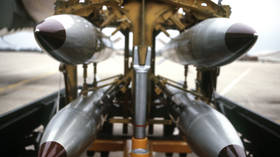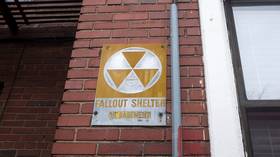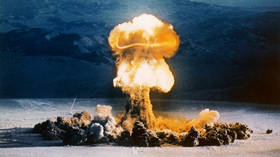US to ‘modernize’ its top nuclear bomb

The US Department of Defense announced on Friday a project to upgrade its main nuclear gravity bomb. The National Nuclear Security Administration (NNSA) at the Department of Energy will develop the B61-13 munition, pending the approval and funding by Congress.
“The B61-13 represents a reasonable step to manage the challenges of a highly dynamic security environment,” Assistant Secretary of Defense for Space Policy John Plumb said. “While it provides us with additional flexibility, production of the B61-13 will not increase the overall number of weapons in our nuclear stockpile.”
Plumb described the announcement as “reflective of a changing security environment and growing threats from potential adversaries.” The Pentagon, however, insisted that the decision was not made in response to “any specific current event” but “reflects an ongoing assessment” of the security environment, as described in the 2022 Nuclear Posture Review.
According to the Pentagon, the B61-13 project would use the established production capabilities supporting the B61-12, with the “modern safety, security, and accuracy features” of the munition, but the much higher yield of the B61-7 model.
While the B61-12 is a tactical weapon, with a yield ranging from 0.3 to 50 kilotons, the B61-7 is a strategic bomb that goes up to 340 KT. According to the military newspaper Stars and Stripes, the newest variant may replace some of the B61-7s as well as the B83, which is due to be retired soon.
First designed in 1963, the B61 is the primary air-dropped thermonuclear weapon in the US arsenal. In addition to the B1B-Lancer, B-2 Spirit, and B-52 Stratofortress bombers, the bomb can also be carried by the F-15 and F-16 tactical attack jets. The F-35 has also been testing the capability to carry and deploy the bomb, though it is not officially rated for it yet.
Air-dropped nuclear weapons are one leg of the Nuclear Triad, the other two being intercontinental ballistic missiles (ICBMs) based either on land or aboard special submarines. A recent report by the congressional Strategic Posture Commission urged a massive expansion of both the conventional US military and the triad, in order to address a potential war with Russia and China at the same time.
According to the Federation of American Scientists, a Washington nonprofit that tracks nuclear arsenals, the US currently has around 5,200 atomic weapons in service, while Russia has almost 5,900.














